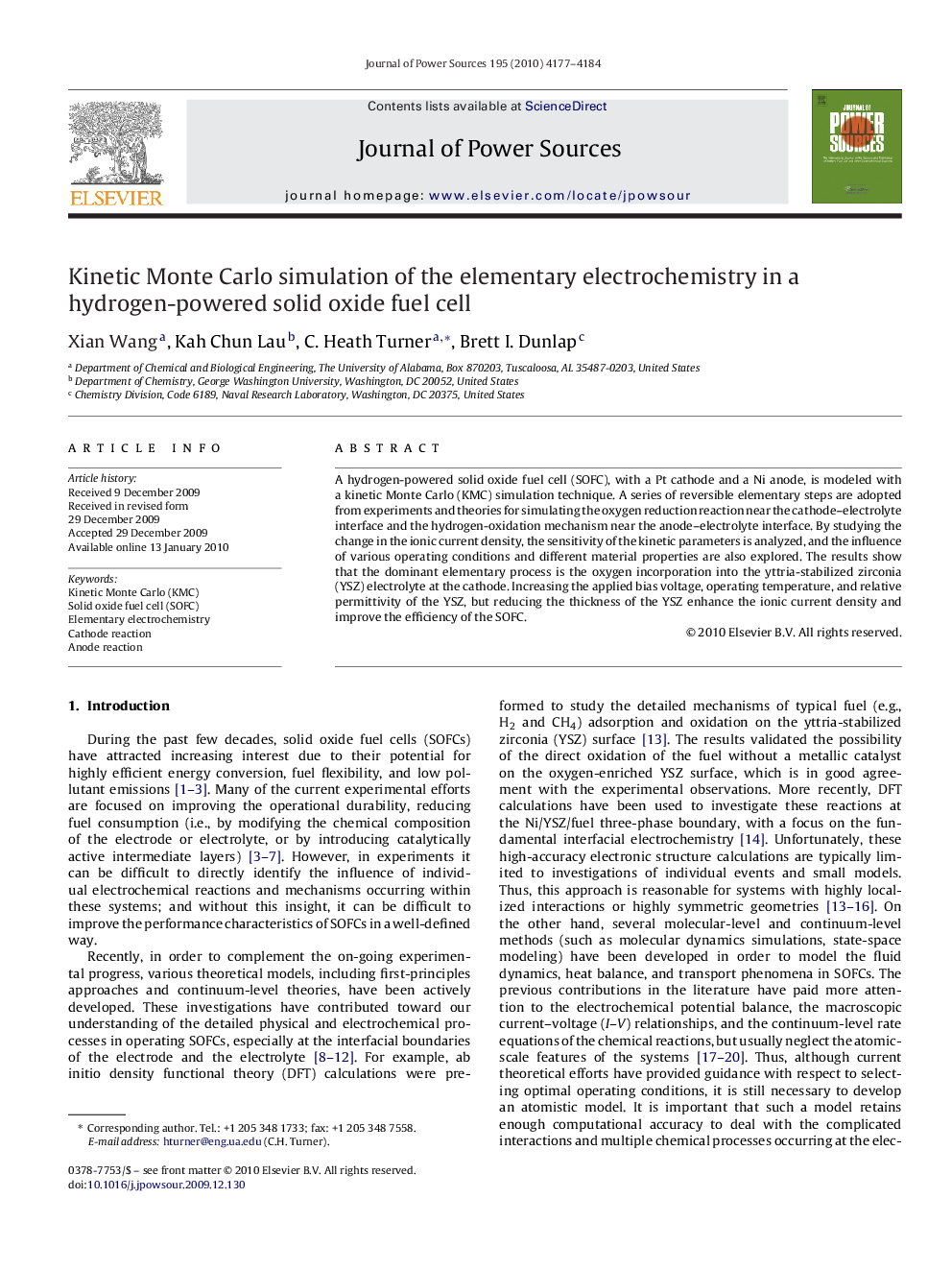| Article ID | Journal | Published Year | Pages | File Type |
|---|---|---|---|---|
| 1290346 | Journal of Power Sources | 2010 | 8 Pages |
A hydrogen-powered solid oxide fuel cell (SOFC), with a Pt cathode and a Ni anode, is modeled with a kinetic Monte Carlo (KMC) simulation technique. A series of reversible elementary steps are adopted from experiments and theories for simulating the oxygen reduction reaction near the cathode–electrolyte interface and the hydrogen-oxidation mechanism near the anode–electrolyte interface. By studying the change in the ionic current density, the sensitivity of the kinetic parameters is analyzed, and the influence of various operating conditions and different material properties are also explored. The results show that the dominant elementary process is the oxygen incorporation into the yttria-stabilized zirconia (YSZ) electrolyte at the cathode. Increasing the applied bias voltage, operating temperature, and relative permittivity of the YSZ, but reducing the thickness of the YSZ enhance the ionic current density and improve the efficiency of the SOFC.
